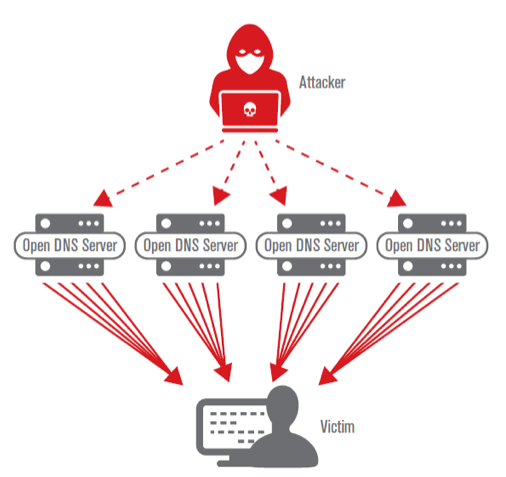
WS FTP might be a good choice if you are in search of a new FTP Client. The interface is easy to use and offers many features. Drag-and-drop functionality, Explicit FTP and support SFTP are some of the features. A trial version is available for download to give it a try.
Features
WSFT is an internet protocol for secure file transfer between computers. It is designed for environments where security is of high importance and recurring file transfer tasks are required. It offers a range of advanced features, such as a failover feature that prevents a server becoming unavailable during a transfer.
WS FTP Professional, unlike other shareware FTP software programs, is backed by a reputable firm and comes with built-in security. It also features a user-friendly interface with a Windows XP feel.
Explicit FTP
Explicit WS FTP has the same functions as a traditional FTP, but is secured with SSL. You must configure your server to allow this protocol. The server must allow SSL/TLS access over port 21. When you open an FTP session, the server must issue a PBSZ0;PROT P command. This initiates the secure data channel.

Explicit WSFTP is a free program that lets you upload, download and manage remote files. It is the perfect application for digital music and software downloads. It offers thumbnail support and an Explorer and Classic interfaces.
Drag-and drop functionality
WS FTP features drag-and-drop functionality for transferring files from and to servers. OpenPGP modes allow you to protect individual files, email attachments, as well as removable media, before they are sent to remote servers. This feature can help you save time as well as ensure data security. It has industry-leading automated features that speed up file transfer tasks, and boost communication.
WS FTP Professional is used by more than 40 million registered users. Its user interface can be customized and is very intuitive. It comes with built-in file compressor. And, it boasts 256-bit AES Transport Encryption, which secures file transfers. It also includes a built-in backup system.
Support for SFTP
To enable SFTP, users need to specify a directory. This directory must include a relative path that begins with a forward space. It must not contain the domain name or HTTP/HTTPS protocol. Access to subdirectories lower down the path is not possible. Each environment's SFTP address will be different. To add this feature to your WSS environment, write down the port number and address.
SFTP can't be supported by all servers. FTP should be used as the default. Users must provide a password and private key when using SFTP. The private keys can be saved in SSH1, OpenSSH. Binary, Putty, IETF, or SSH1. It is important that users pay attention when setting the password. They should also create a backup of any content before they edit it.

Cost
WS_FTP Professional makes a great choice if web administrators have multiple sites. The application provides everything that an administrator needs in order to transfer files between different sites. It also supports failover, which ensures high availability. WS_FTP comes in several editions. Organizations can choose which one best suits their requirements.
This program features several key protections for your business's sensitive information. Its embedded encryption makes data transfers secure and protected. You can access and control files from multiple locations. You can schedule future transfers or use bulk compression to compress larger files. The program also supports multiple sites and offers an easy-to-use interface.
FAQ
What is a responsive website design?
Responsive Web Design is a method of designing responsive websites. It allows content to display on all devices (desktop computers, tablets and smartphones), so that it can be viewed easily on any device. This allows users access all features of a website, including navigation menus, buttons and buttons, on one device. RWD's goal is to ensure that users view the exact same version of a website on every screen size.
Consider, for instance, that you're building a website for an eCommerce company and your products are sold primarily online. It is important to ensure that your website can be accessed on any device, including a smartphone.
Responsive websites will adjust their layout according to the device that is being used. So, viewing the site on your laptop will look like a standard desktop website. It will look different if you view the page from your phone.
This allows you create a website that looks great on any device.
What is Website Design Software and How Does It Work?
Software for designing websites is used by photographers, illustrators and writers.
There are two main types of website design software: desktop applications and cloud-based solutions. Desktop apps are installed locally on your computer and require you to install additional software on your computer. Cloud-based apps are hosted remotely on the Internet and do not require any additional software. This makes them perfect for mobile users.
Desktop Applications
While desktop applications have more features than cloud-based options, they're not always needed. Some people prefer to work only from a desktop application because it is more convenient. Some people prefer to use the same tool, regardless of whether it is on a phone or a laptop.
Cloud-Based Solutions
Cloud-based solutions are a great option for web designers looking to save time and money. These services allow you to edit any type of document from anywhere that has an internet connection. This means that you can work on your tablet while waiting to brew your coffee.
If you decide to use a cloud service, you will still need a license. You don't have to buy additional licenses for upgrading to the latest version.
These programs are available for web page creation if you have Photoshop or InDesign, Illustrator, and other Adobe products.
Can I create my own website with HTML & CSS?
Yes! Yes!
After you have learned how to structure a website, you will need to know HTML and CSS.
HTML stands for HyperText Markup Language. You can think of it as writing a recipe. You'd list the ingredients, instructions, along with directions. HTML allows you to indicate to a computer which portions of text are bold, italicized and underlined. It also lets you know which part of the document is linked. It's the language for documents.
CSS stands as Cascading Stylesheets. You can think of CSS as a style sheet for recipes. Instead of listing each ingredient and instructing, you can write down general guidelines for font sizes, colors and spacing.
HTML tells the browser how a page should look; CSS tells it what to do.
You don't have to be a prodigy if you don’t get the terms. Follow these steps to make beautiful websites.
WordPress: Is it a CMS or not?
Yes. It's a Content Management System (CMS). CMS allows you to manage the content of your website from within a web browser, instead of using applications like Dreamweaver and Frontpage.
WordPress is completely free! You don't have to pay for anything other than hosting, which your ISP usually provides.
WordPress was initially intended to be used as a blog platform. Now, WordPress offers many different options: eCommerce sites, forums. Membership websites. Portfolios.
WordPress is simple and easy to install. To install WordPress, you will need to download the installer file from their website. Once it is downloaded, upload it to your server. After that, you can simply access your domain name with your web browser.
After installing WordPress, it's necessary to register for a username. Once you log in, you will be able to access your settings from a dashboard.
This is where you can add pages or posts, images and links to them. This step may be skipped if you feel confident editing and creating content.
If you prefer to work with a professional web designer, you can hire them to manage the entire process.
Statistics
- It's estimated that chatbots could reduce this by 30%. Gone are the days when chatbots were mere gimmicks – now, they're becoming ever more essential to customer-facing services. (websitebuilderexpert.com)
- Is your web design optimized for mobile? Over 50% of internet users browse websites using a mobile device. (wix.com)
- Studies show that 77% of satisfied customers will recommend your business or service to a friend after having a positive experience. (wix.com)
- The average website user will read about 20% of the text on any given page, so it's crucial to entice them with an appropriate vibe. (websitebuilderexpert.com)
- It enables you to sell your music directly on your website and keep 100% of the profits. (wix.com)
External Links
How To
What is website Hosting?
Website hosting is the location where people go when they visit websites. There are two types:
-
Shared Hosting - This is your cheapest option. Your website files are stored on a server that is owned by another person. Customers who visit your website send their requests via the Internet over to that server. The server owner then forwards the request to you.
-
Dedicated hosting – This is the most expensive option. Your website is only accessible from one server. Your traffic is private because no other websites have shared space on this server.
Because it is less expensive than dedicated hosting, shared hosting is preferred by many businesses. You can use shared hosting if the company owns the server to provide the resources required for your website.
There are pros and disadvantages to each option. Here are the differences:
The pros of shared hosting:
-
Lower Cost
-
It's easy to set up
-
Frequent Updates
-
It is available on many Web Hosting Companies
Shared hosting can often cost as little as $10/month. But keep in mind that this price usually includes bandwidth. Bandwidth refers the data that you can transfer over the Internet. Even if only you upload photos to your blog or website, high-volume data transfers may incur additional charges.
You'll soon realize why your old host cost so much once you get started. Most shared hosts don't offer any customer support. You'll be on your way after they walk you through setting it up.
You'll want to look into a provider that offers 24-hour phone support. They will help you deal with any issues that arise while your sleeping.
Cons of dedicated hosting
-
More Expensive
-
Less Common
-
You will need to have special skills
With dedicated hosting, you get everything you need to run your website. You won't have to worry about whether you're using enough bandwidth or whether you've got enough RAM (random access memory).
This means you will need to spend more upfront. However, once your business goes online, you'll discover that you don’t need as much technical support. You'll be able to manage your servers effectively.
Which is better for my business?
The answer to this question depends on which type of website you wish to create. If you only want to sell products, then shared hosting might be the best choice. It's very easy to setup and maintain. You'll probably receive frequent updates because you are sharing a server hosting many other sites.
However, dedicated hosting is the way to go if you want to build a community around your brand. Instead of worrying about your traffic, you can build your brand while still being able to concentrate on your business.
Bluehost.com is a web host that offers both. They offer unlimited monthly data transfers, 24/7 support, free domain name registration, and a 30-day money-back guarantee.